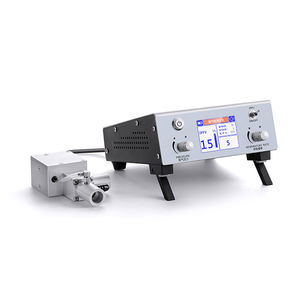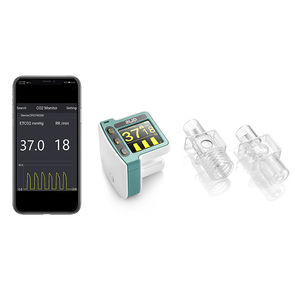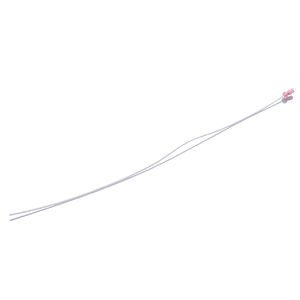
- Laboratory
- Medical research
- Veterinary ventilator
- RWD Life Science
- Company
- Products
- Catalogs
- News & Trends
- Exhibitions
Veterinary ventilator R419for animal researchfor small animalsfor rodents

Add to favorites
Compare this product
Characteristics
- Applications
- veterinary, for animal research
- Patient type
- for small animals, for rodents, for mice, for rats, for guinea pigs
- Configuration
- benchtop
- Other characteristics
- with touch screen
Description
Built-in dog and cat standard ventilation parameters, veterinarians only need to enter the animal’s weight, and then other parameters will be matched automatically such as respiratory rate, tidal volume, and peak airway pressure.
R419 has both VCV and PIPCV modes. It provides more flexible ventilation solutions for veterinarians and animals.
Furthermore, it also has a unique APNEA mode. This mode does not interfere with the spontaneous breathing of the animal and is especially suitable for the wake period.
Application: Operating room, Endoscopic operating room, CT room, Teaching hospital, etc.
Features
• Adjustable power supply (110/220v)
• Lightweight & portable
• Provides safe & effective intermittent positive pressure ventilation (IPPV)
• Provides internal battery power for up to 4 hours
• 3 modes: VCV/PIPCV/APNEA
• Equipped with 2 different sized bellows – 20-300ml and 300-1500ml
• Respiratory rate (2-60BPM) Respiratory ration (1:1.-1:1:4.0) Airway pressure rate _5-35cmH20)
Benefits
1.More flexible ventilation solution, Allow vets to choose VCV or PIPCV according to the actual situation of the case, or choose whether to keep the animal’s spontaneous breathing according to the surgical stage.
2.Touch-sensitive screens make the date inputting much faster than traditional knob adjustment and bring a comfortable human-computer interaction experience.
3.Save operation time, more convenient experience. Especially for vets who are not very familiar with ventilation parameters. They can directly refer to the built-in data and easily obtain mechanical ventilation skills.
VIDEO
Catalogs
Related Searches
- Microscopy
- Compound microscope
- Laboratory microscope
- Tabletop microscope
- Microscope with LED light
- Multiparameter monitor
- Gas pressure regulator
- Infusion pump
- Syringe pump
- SpO2 multiparameter monitor
- ECG multiparameter monitor
- Oxygen multi-parameter monitor
- Compact multiparameter monitor
- Electronic ventilator
- NIBP multiparameter monitor
- LED illuminator
- Temperature multi-parameter monitor
- 1-channel syringe pump
- RWD veterinary anesthesia workstation
- RESP multiparameter monitor
*Prices are pre-tax. They exclude delivery charges and customs duties and do not include additional charges for installation or activation options. Prices are indicative only and may vary by country, with changes to the cost of raw materials and exchange rates.





















